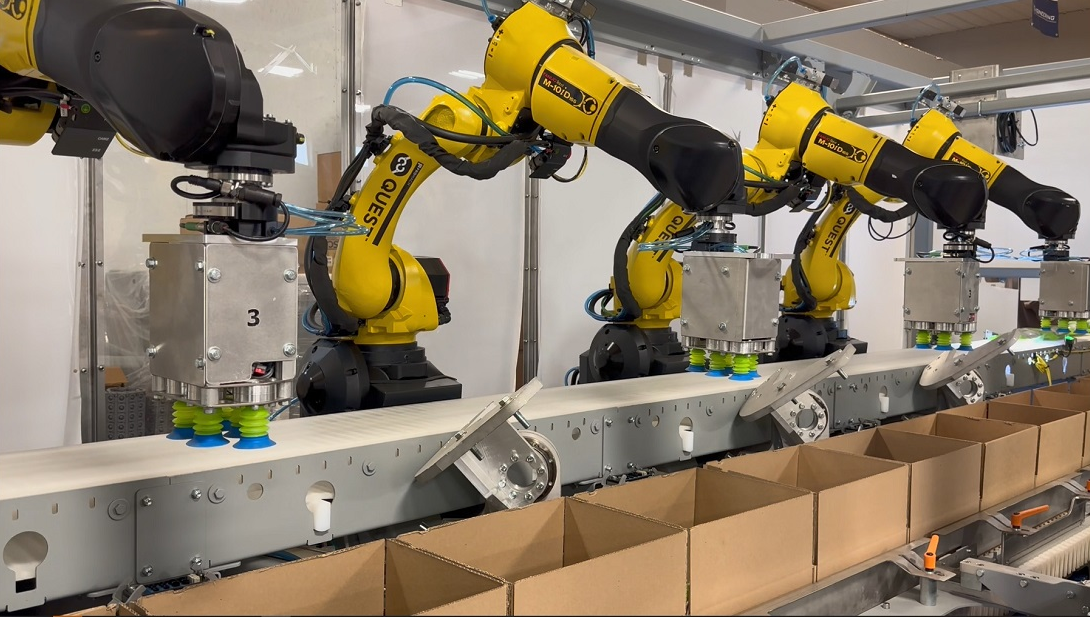The rise of collaborative robots, or cobots, is reshaping industries across the globe, and packaging and fulfillment operations are no exception. As businesses strive to improve efficiency, accuracy, and safety, cobot arms are becoming an integral part of the operational landscape. This article explores how these advanced technologies are revolutionising packaging and fulfillment processes, addressing challenges, and paving the way for a more efficient future.
Understanding Cobot Technology
Cobot arms are designed to work alongside human workers, providing assistance in tasks that range from simple to complex. Unlike traditional industrial robots, which often operate in isolation, cobots are equipped with sensors and advanced software that allow them to safely interact with people and adapt to dynamic environments.
The evolution of cobot technology has been remarkable. Originally developed for specific tasks, modern cobots are increasingly versatile, capable of performing a wide variety of functions, such as sorting, packing, and quality inspection. With ongoing advancements in artificial intelligence and machine learning, cobots are becoming smarter and more efficient, enhancing their capabilities even further.
Advantages of Cobots in Packaging and Fulfillment
One of the most significant benefits of integrating cobots into packaging and fulfillment operations is the increase in efficiency. Cobots can operate continuously, performing repetitive tasks at speeds that exceed human capability. This enhanced speed not only accelerates the overall workflow but also allows human workers to focus on more complex and value-added activities. As a result, businesses can scale their operations without a corresponding increase in labor costs.
Enhanced Accuracy
In packaging, precision is paramount. Errors in labeling, packing, or sorting can lead to costly returns and dissatisfied customers. Cobot arms, equipped with advanced sensors and vision systems, can perform these tasks with remarkable accuracy. They minimise the risk of human error, ensuring that products are packed correctly and consistently. This not only improves customer satisfaction but also enhances operational reliability.
Improved Worker Safety
The introduction of cobots also has significant implications for worker safety. Repetitive tasks, such as lifting and sorting, can lead to strain injuries over time. Cobots can take over these physically demanding jobs, allowing human workers to engage in more diverse and less hazardous activities. Furthermore, cobots are designed to be safe; they can detect nearby human presence and slow down or stop their operations, significantly reducing the risk of accidents in the workplace.
Real-World Applications
The applications of cobots extend beyond e-commerce and food and beverage. Sectors such as pharmaceuticals, automotive, and electronics are also leveraging cobots for packaging tasks. For instance, in pharmaceuticals, cobots are used to package medications in a sterile environment, ensuring both safety and compliance with strict regulations.
Challenges and Considerations
While the benefits of cobots are substantial, integrating them into existing systems poses challenges. Compatibility issues can arise, requiring businesses to invest in upgrades or modifications. Additionally, training staff to work alongside cobots is crucial to maximise their potential. Organisations must ensure that employees understand how to collaborate effectively with these machines.
Adopting cobot technology involves an upfront investment that can be daunting for some companies. While the initial costs may be high, it’s essential to consider the long-term savings and increased productivity that cobots can bring. By analysing the return on investment (ROI), businesses can make informed decisions about implementing cobot solutions.
As with any technological advancement, the rise of cobots raises concerns about job displacement. Employees may fear that cobots will replace their roles entirely. However, many experts argue that cobots are intended to augment human labor rather than replace it. By taking on repetitive tasks, cobots allow workers to focus on higher-value functions, which can lead to job enrichment and the need for new skills.
Future Trends in Cobots and Packaging
Looking ahead, the future of cobot technology appears bright. Predictions suggest that we will see further integration of artificial intelligence and machine learning into cobots, allowing them to perform more complex tasks autonomously. Enhanced data analytics capabilities will also enable cobots to adapt to changing conditions in real-time, optimising operations on the fly.
The market for cobots is expected to continue its rapid expansion. Industry forecasts indicate that the demand for cobots will grow as businesses recognise their potential to improve efficiency and reduce costs. New applications in sectors like healthcare and logistics are likely to emerge, broadening the scope of cobot utility.
Conclusion
Cobot arms are undoubtedly transforming the packaging and fulfillment landscape. By enhancing efficiency, accuracy, and worker safety, they are addressing long-standing challenges in the industry. As technology continues to evolve, the potential applications for cobots will only expand, offering businesses new opportunities to improve their operations. Companies that embrace this innovation will not only stay competitive but also pave the way for a more collaborative and efficient future.
In this rapidly changing environment, it’s essential for organisations to consider integrating cobots into their operations. The benefits are clear, and the future of packaging and fulfillment lies in collaboration between human workers and these remarkable machines.

“Web specialist. Social media ninja. Amateur food aficionado. Alcohol advocate. General creator. Beer guru.”






